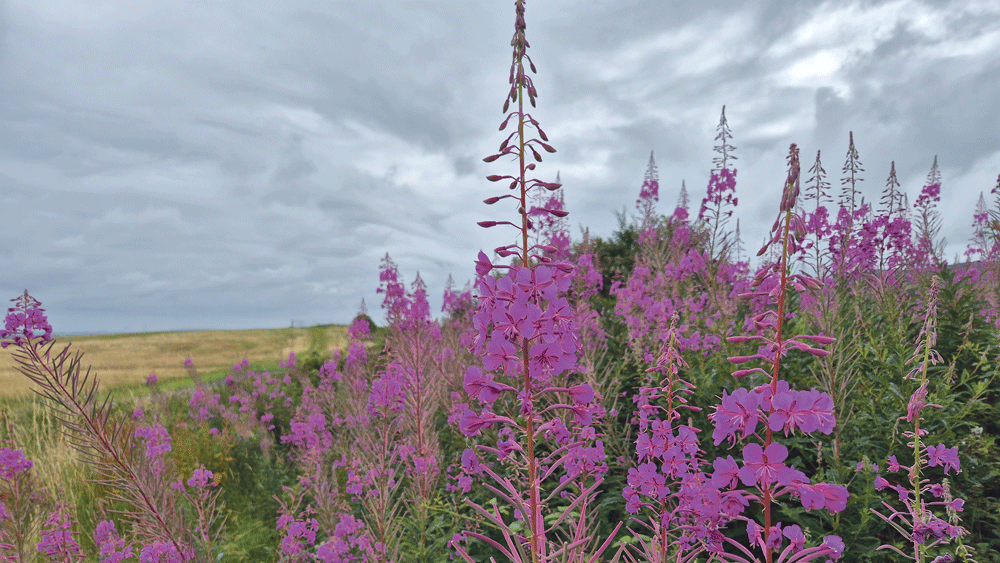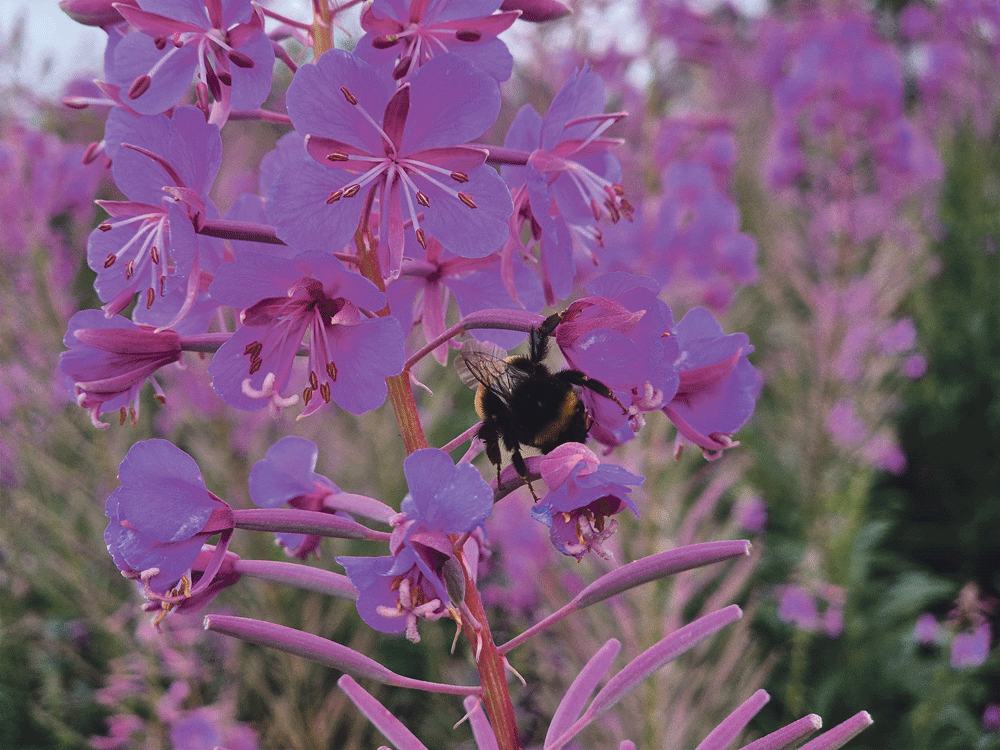

Nature on our doorsteps: Pretty in pink
Rosaleen Dwyer is the County Heritage Officer at South Dublin County Council – every week she gives us an insight into the natural heritage around us and the beautiful biodiversity of the plants and creatures.
In July and August, impressive tall, pink, flowering spikes are noticeable along roadsides, hedgerows, woodland edges, and waste ground.
These plants are most likely to be Rosebay Willowherb, whose spikes can reach up to 2m high.
The flowers bloom from the bottom of the spike first, giving the spike a nice, elegant, tapering profile.
The plant’s leaves are long and narrow, like the leaves of certain Willow trees.
This is most likely the origin of the flower’s ‘Willowherb’ name.
The individual flowers have four pink petals. Once the flowers have been pollinated, the petals fall away and the long, thin seed pods begin to develop.
Flowers at the top of the spike are often still in bloom while the seed pods at the bottom are ready to release their seeds.
The mature pods split open to reveal the wispy thin white hairs attached to the seeds.

The pretty four-petalled flowers are visited by bumblebees and honeybees
These hairs are caught by the breeze, and in this way the seeds are spread far and wide. One plant can produce hundreds of seeds.
Rosebay Willowherb is known as a pioneer plant, meaning it quickly colonises empty spaces where soil has been disturbed.
This can occur along roadsides after construction work, or in hedgerows or woodland edges where trees have blown over in the wind, exposing the soil.
When soil is disturbed, nutrients are released from decaying organic matter in the soil.
If Rosebay Willowherb’s seeds land in such soil, they quickly take advantage of the plentiful nutrients and the empty space. Its seeds germinate rapidly, and new shoots cover the bare soil before other plants arrive.
The flowering patch, however, only lasts for a few years.
The soil’s initial flush of nutrients declines as the plants rapidly grow, and over the next few years the new plants do not grow so tall. Other plants eventually move in and compete successfully for nutrients and light.
By then, however, Rosebay Willowherb has already spread thousands of its seeds in the area, ready to take advantage of the next opportunity to colonise a bare patch.

